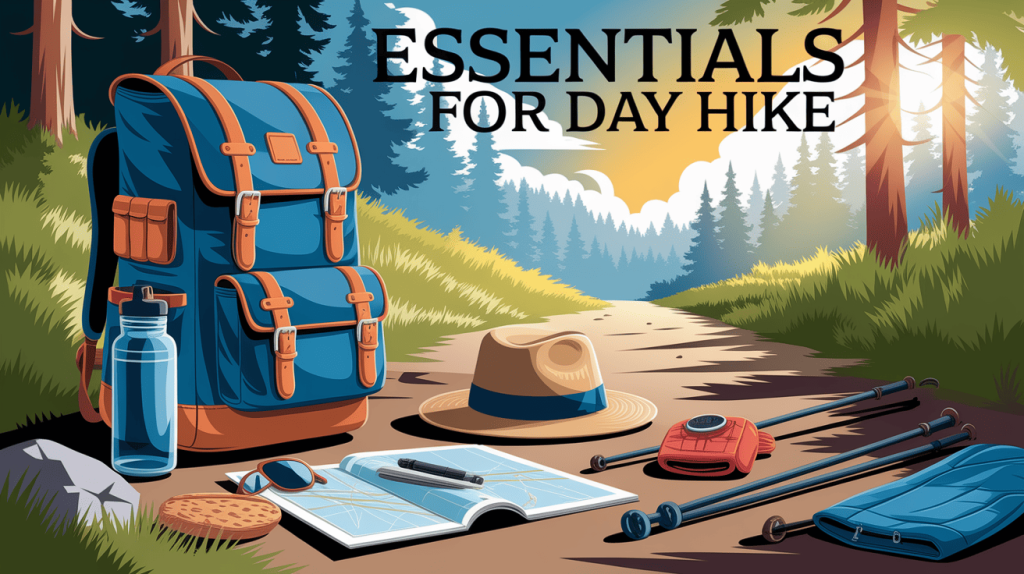Ready to hit the trails but unsure about your packing list? A successful day hike starts with smart preparation. The right gear ensures your outdoor experience stays safe, comfortable, and enjoyable from start to finish.
Day hiking offers a perfect escape into nature without the complexity of overnight camping—but don’t mistake simplicity for unpreparedness.
Even a few hours on the trail requires thoughtful packing to handle changing weather, physical demands, and unexpected situations. From essential clothing layers to emergency supplies, having the right items in your backpack creates confidence on any trail.
The content covers everything you need to pack for day hikes in any season, helping you focus less on worrying and more on the beautiful landscapes around you.
What to Wear on a Day Hike
Your clothing choices can make or break your hiking experience. Comfort and protection from the elements should be your top priorities when dressing for the trail. The right gear keeps you safe from changing weather and helps prevent injuries and discomfort.
Layering is the key strategy that experienced hikers swear by. Start with a moisture-wicking base layer that pulls sweat away from your skin, add an insulating mid-layer for warmth, and top with a weather-resistant outer shell that can be removed as conditions change.
This system allows you to regulate your body temperature throughout the day as you move between sunny exposures and shaded forests, or as the weather shifts unexpectedly.
1. Comfortable Clothing

Choose non-cotton athletic wear that pulls sweat away from your body and dries quickly. Cotton holds moisture against your skin, making you cold and uncomfortable when temperatures drop or wind picks up.
Look for synthetic fabrics or Merino wool that keeps you dry and prevents chafing.
Wear pants or shorts based on the trail conditions. Pants protect against scratches from brushes and insects, while shorts offer better cooling on hot days.
2. Footwear
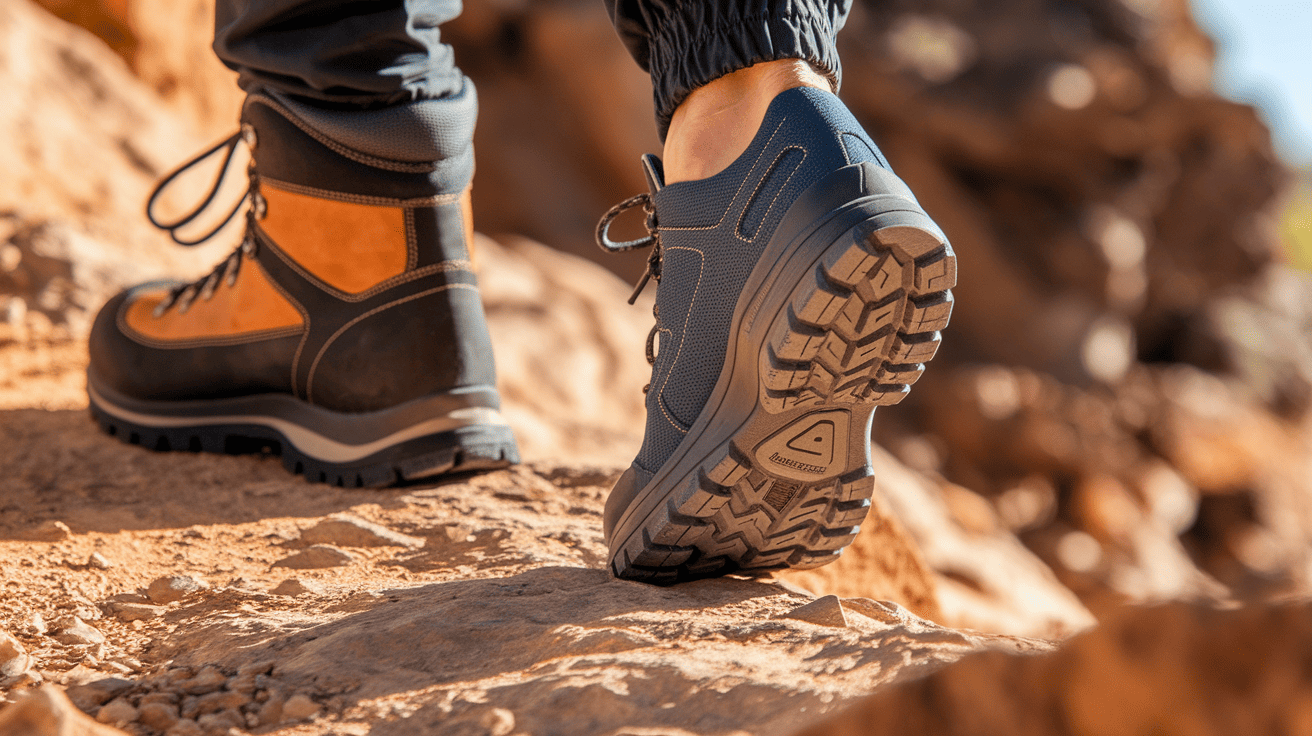
Your feet carry you through the entire hike, so proper footwear is essential. Hiking shoes or boots with good traction prevent slips on loose dirt, rocks, and mud.
Look for ankle support if you’ll be on uneven terrain or carrying a heavier pack.
Make sure your shoes fit well, with room for toes to spread while walking downhill. Break in new footwear before hitting the trail to prevent painful blisters that can ruin your hike.
3. Layers for Weather
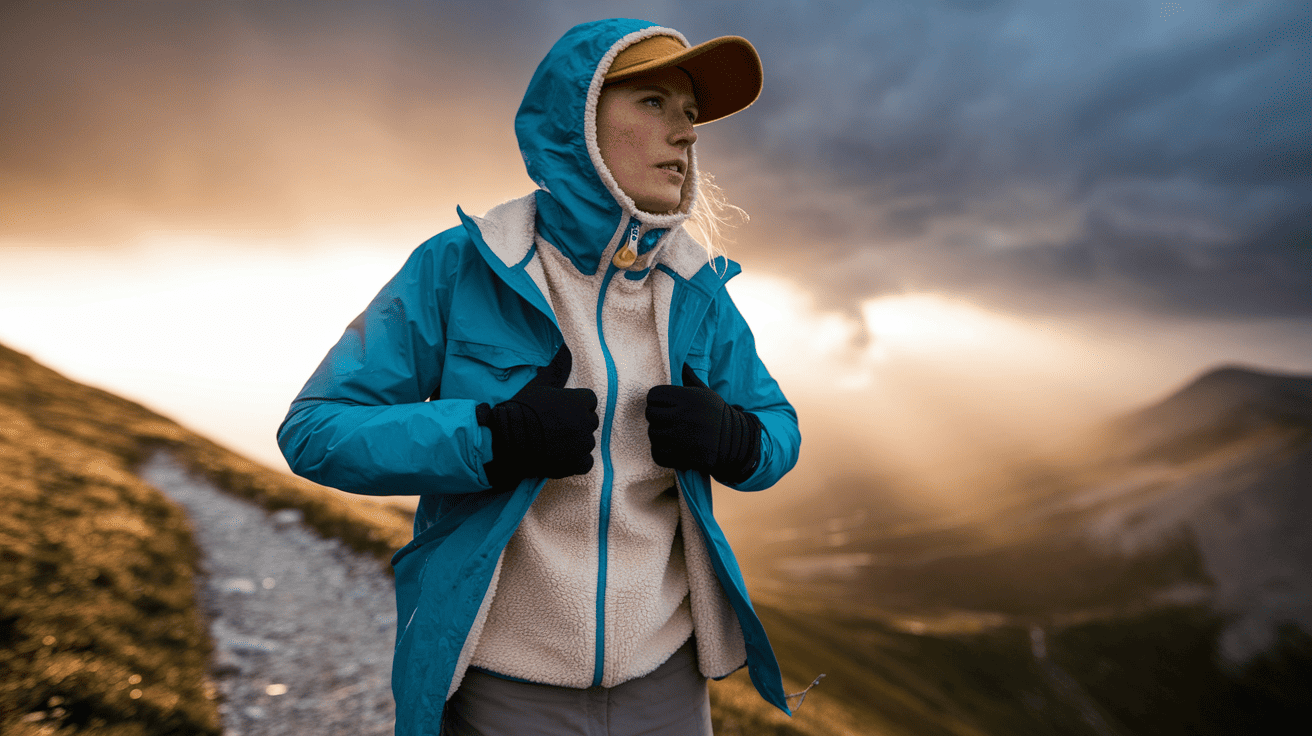
Mountain and forest weather can change quickly, so bring layers you can add or remove as needed. Start with a moisture-wicking base layer, add an insulating mid-layer like a fleece for warmth, and pack a waterproof outer layer for wind and rain protection.
Gloves and a warm hat take up little space but make a huge difference if temperatures drop.
Check the forecast before your hike, but always prepare for the weather to be a bit worse than predicted.
4. Socks and Accessories
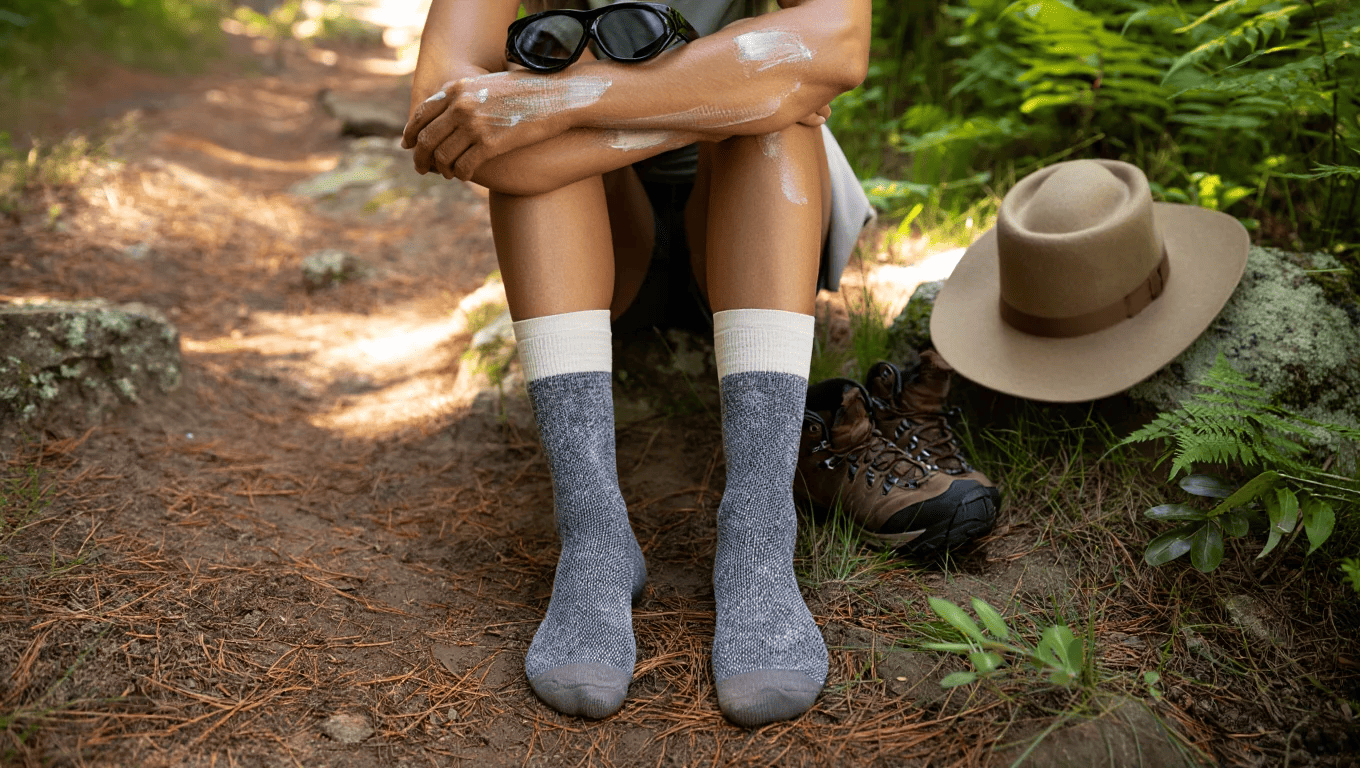
Quality socks are just as important as good shoes for hiking comfort. Choose wool or wool-blend socks that cushion your feet, wick moisture, and prevent blisters even when wet.
Bring sunglasses to protect your eyes from harmful UV rays, especially at higher elevations where sun exposure intensifies.
Apply sunscreen generously to all exposed skin, even on cloudy days. Don’t forget a wide-brimmed hat for additional face and neck protection from the sun.
Essential Gear to Pack
Never head out on a hike without these crucial items. Proper preparation prevents problems and helps you enjoy your time outdoors. These essentials ensure your safety and comfort throughout your hike.
Packing the right gear makes all the difference between a pleasant outing and a difficult experience. Each item serves an important purpose for your well-being on the trail. Take time to gather these supplies before every hike, even short ones.
1. Hydration
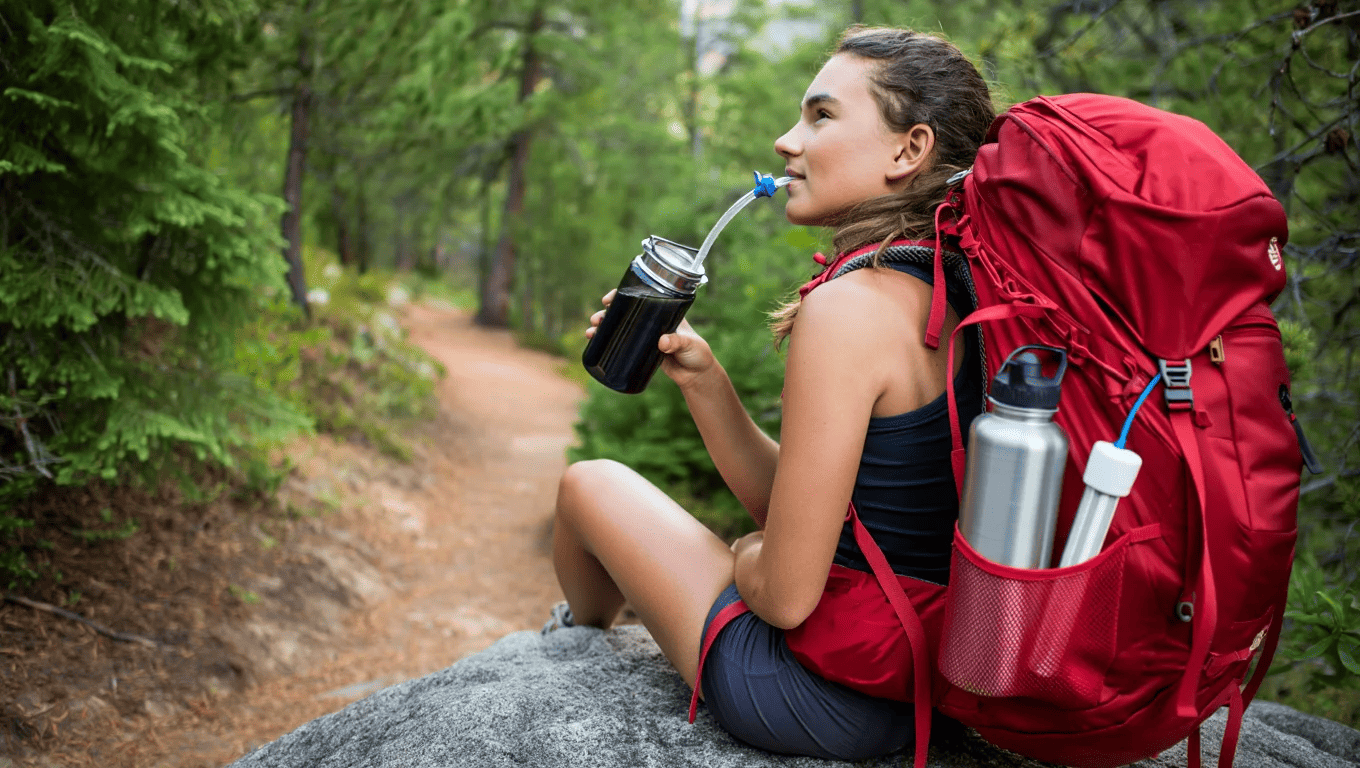
Water is your most important hiking companion. Plan to bring at least 16-24 ounces of water per hour of hiking in moderate conditions, more in hot weather.
Carry water in bottles or a convenient hydration reservoir with a drinking tube.
For longer hikes, consider bringing a portable water filter or purification tablets to refill from natural sources. Remember that dehydration can happen quickly on the trail, affecting your energy and decision-making ability.
2. Food
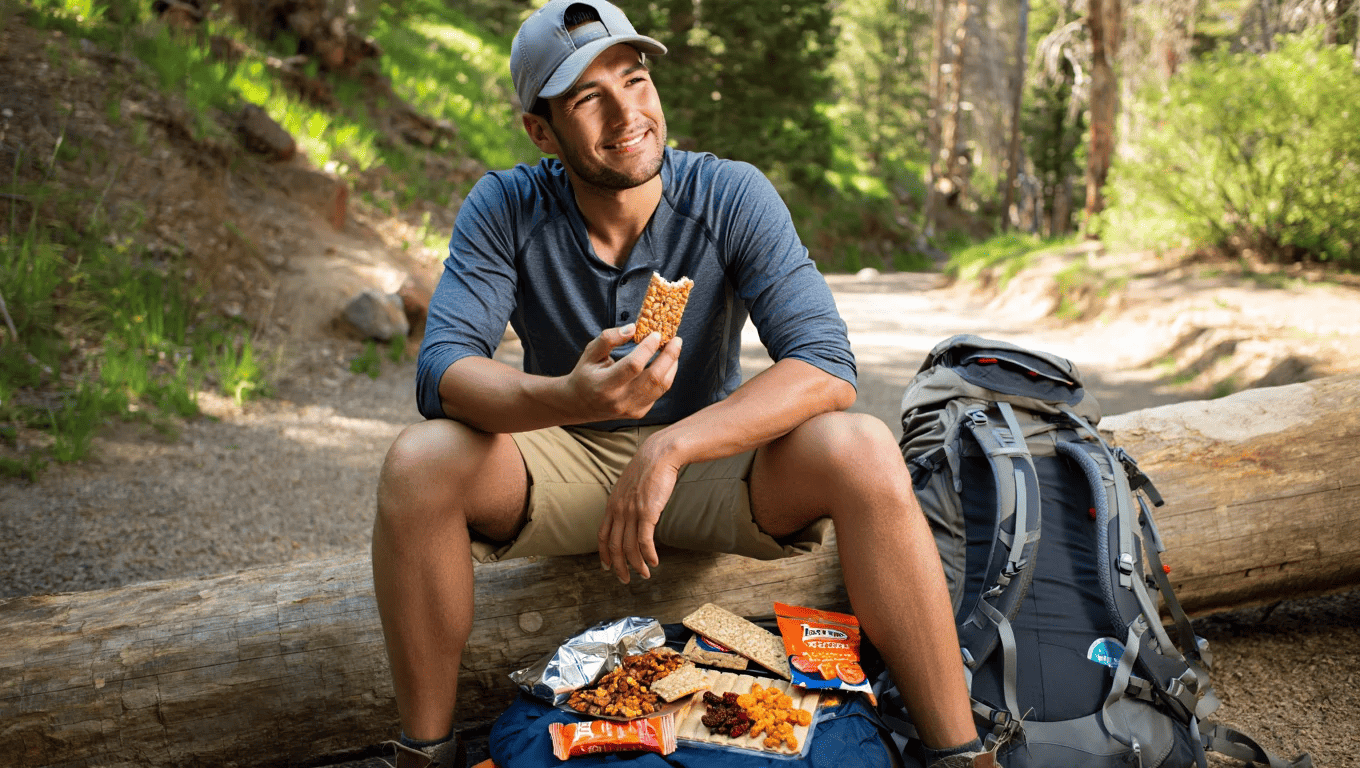
Proper fuel keeps your energy levels stable during your hike. Pack calorie-dense, non-perishable foods like trail mixes, granola bars, jerky, and dried fruits that provide a mix of carbohydrates and protein.
Always bring more food than you think you’ll need in case your hike takes longer than expected.
Small, frequent snacks work better than large meals to maintain consistent energy throughout your day. Choose foods you enjoy eating to make refueling a pleasure rather than a chore.
3. Navigation Tools

Getting lost can turn a pleasant hike into a dangerous situation. Always carry a detailed map of the area, even if you’re familiar with the trail.
A compass or GPS device provides additional security, especially in areas with poor trail marking or challenging terrain.
Learn basic navigation skills before your hike, and make sure your electronic devices are fully charged. Many hiking apps now offer downloadable offline maps that work without cell service.
4. First Aid and Medications
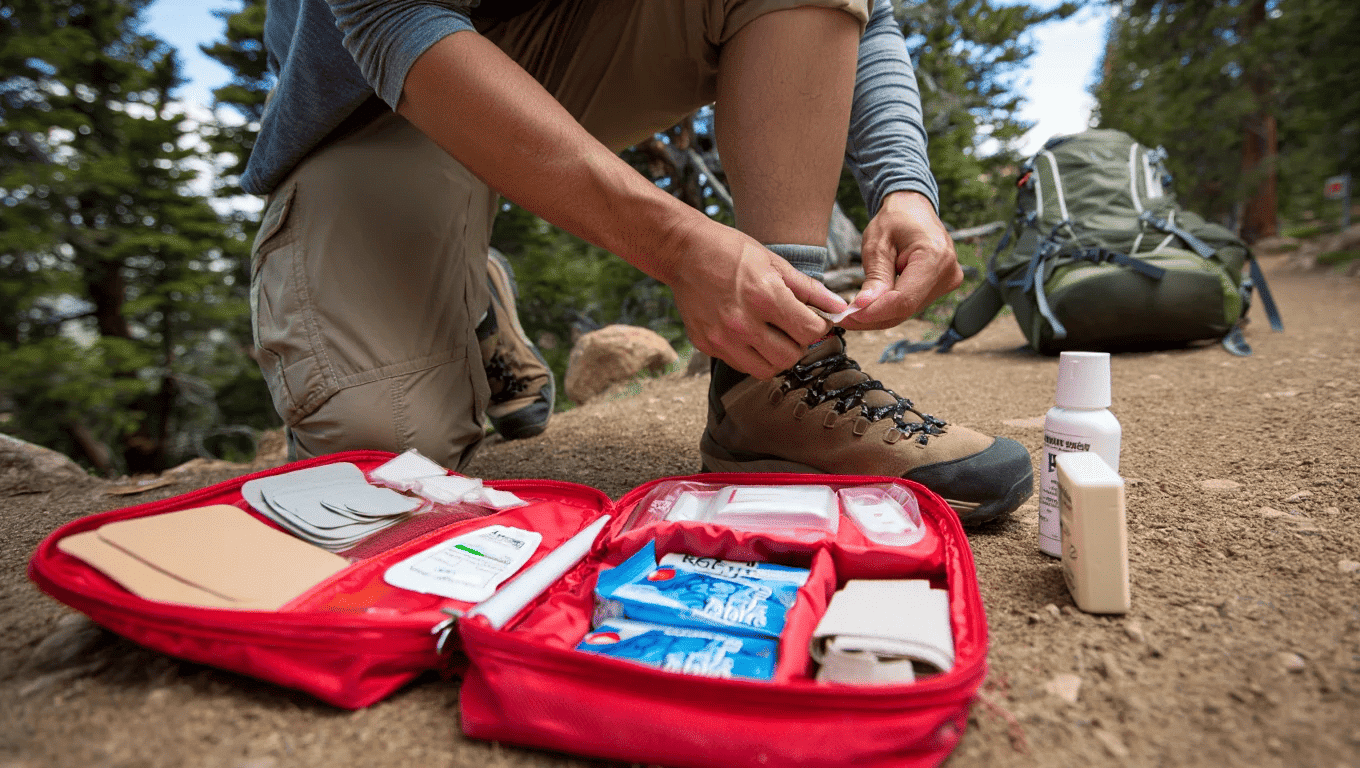
A basic first-aid kit can handle most trail emergencies. Include adhesive bandages, antiseptic wipes, pain relievers, blister treatment, and any personal medications.
Add insect repellent to prevent bug bites and antihistamines if you’re prone to allergic reactions.
Moleskine or specialized blister bandages are worth their weight in gold for foot care. Check your first-aid supplies before each hike and replace any used or expired items promptly.
Safety and Emergency Preparedness
Always be prepared for the unexpected on the trail. Weather changes fast, injuries happen, and wrong turns are common.
These few safety items can make a critical difference in an emergency. Smart preparation prevents many problems from the start.
| ITEM | PURPOSE | WHY IT MATTERS |
|---|---|---|
| Headlamp & Batteries | Light for darkness | Prevents dangerous navigation after sunset |
| Emergency Shelter | Space blanket/bivy sack | Protects from cold and weather if stranded |
| Fire Starter | Matches, lighter, etc. | Provides warmth, signals help when needed |
| Whistle | Emergency signaling | Heard farther than shouting, saves energy |
| Satellite Communicator | Remote messaging | Works where cell phones don’t, shares your location |
Keep safety gear in your pack at all times. Create a dedicated “safety pouch” for these essentials. Practice using your emergency items before you need them.
Check batteries and fire starters regularly. Your emergency kit is an investment in safety you hope never to use.
Optional Items for Convenience and Comfort
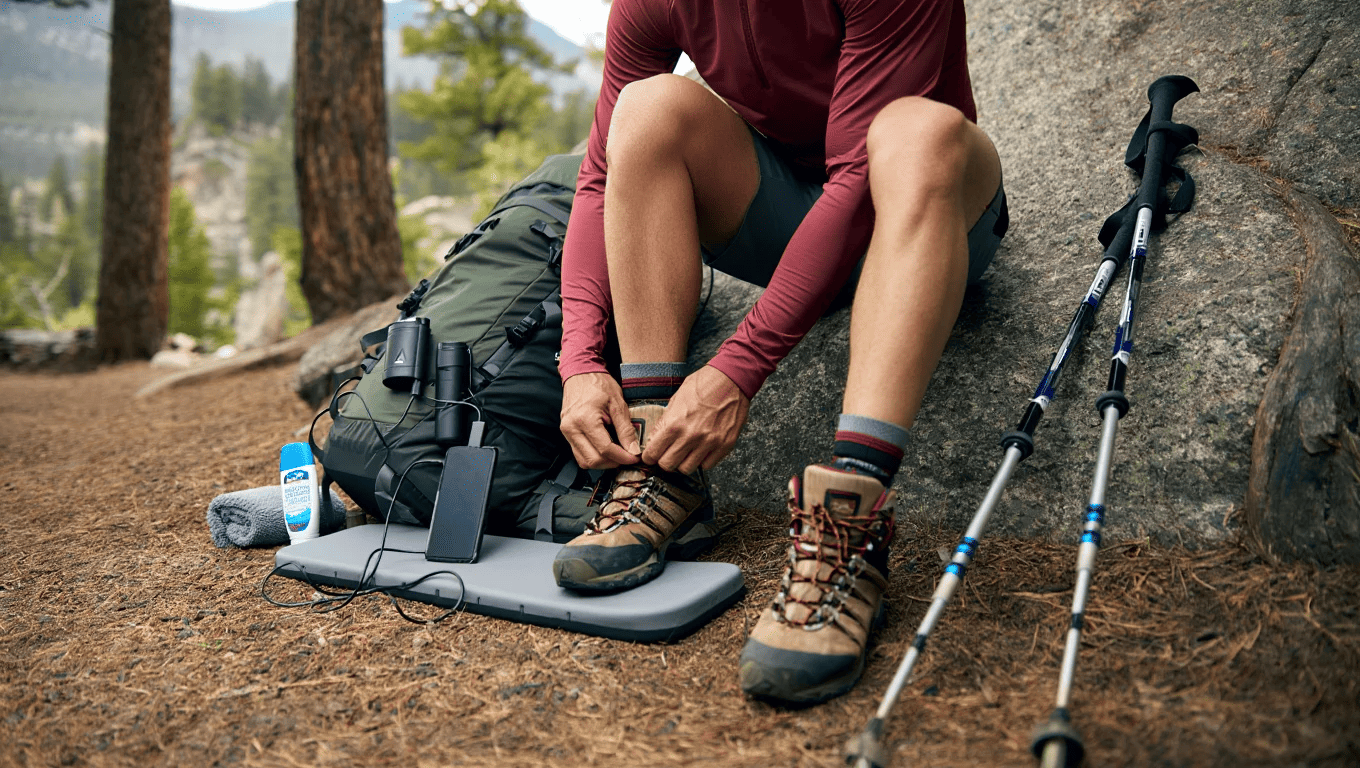
These items aren’t essential for safety, but can greatly improve your hiking experience. They solve common problems that might otherwise cause discomfort or frustration on the trail.
Consider adding these to your pack if you have space and don’t mind the extra weight. Your comfort level can make the difference between an enjoyable day outdoors and a challenging ordeal.
- Use trekking poles to reduce knee strain and improve balance on varied terrain.
- Pack a portable charger to keep essential electronic devices like phones and GPS functioning throughout your hike.
- Bring bug protection to prevent uncomfortable bites and potential disease transmission while enjoying the outdoors.
- Carry comfort items like a foam sit pad for breaks and a versatile pack towel for sweat, water crossings, and unexpected needs.
- Consider specialized gear such as binoculars for wildlife viewing and gaiters to keep debris out of your footwear on challenging trails.
While these items add some weight to your pack, many hikers find the benefits worth the extra ounces. Choose which optional items make sense based on your personal needs and the specific conditions of your planned hike.
Remember that even small comforts can have a big impact when you’re miles from the trailhead. The best hiking experience comes from being prepared without being overburdened.
Always Share Your Hiking Plans with Someone
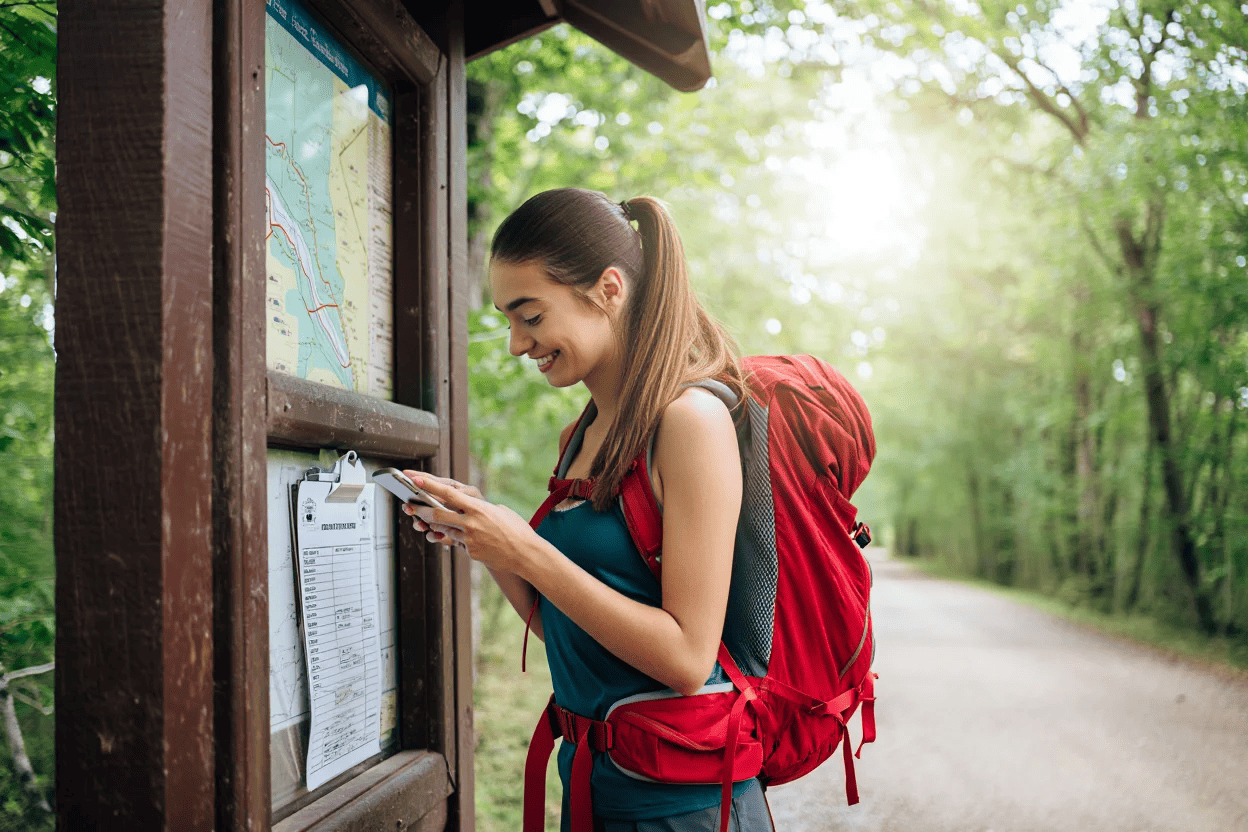
Before heading out on any hike, always tell someone reliable about your plans. Share details about the trail you’re taking, when you expect to start and finish, and what time to call for help if they don’t hear from you.
Include information about where you’ll park your car and any alternate routes you might take. Send a quick text or call when you begin your hike and again when you safely return.
This simple step could save your life if you get lost, injured, or caught in bad weather. Many hikers use their phones to send a photo of the trailhead map or write down the emergency numbers posted there. Some parks have sign-in sheets at trailheads—always use these when available.
Remember that cell service is often unreliable in natural areas, so don’t count on being able to call for help. Taking a few minutes to share your plans provides an essential safety net for any day hike.
Summing It Up
The perfect day hike combines nature’s beauty with proper preparation. Your backpack serves as your portable safety net, containing everything needed to stay comfortable, hydrated, and secure on the trail.
Remember that each item serves a purpose, from preventing blisters to helping in emergencies. As you gain experience, you’ll refine your personal packing list based on your preferences and the specific demands of your favorite trails.
Equip yourself with these fundamentals, then customize for your journey. The wilderness beckons with its rugged peaks, ancient woodlands, and hidden valleys—your thoughtfully prepared daypack standing ready as the trusted companion for every footfall along your adventure.
Happy trails and safe hiking as you create memorable outdoor experiences with confidence and peace of mind.
Don’t miss out—return for more vacation planning tips and off-the-beaten-path guides.

